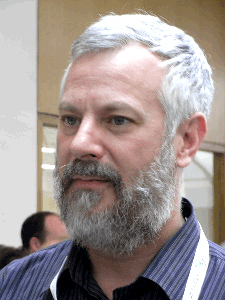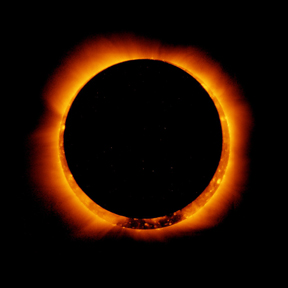By Ann Needle

Courtesy http://hea-www.cfa.harvard.edu
Star-gazers everywhere are excited about the upcoming total solar eclipse on Aug. 21 – even in Stow, where only a partial solar eclipse will be visible. But one Stow resident has a particular reason to be focused on Monday’s celestial event, flying right into the path of the total eclipse in search of what will hopefully be landmark scientific information.
In his journey to the center of the US, Senior Astrophysicist and Stow resident Edward DeLuca of the Harvard-Smithsonian Center for Astrophysics reported he, his team, and a spectrometer will be making their observations of the eclipse aboard a Gulfstream V craft flying over Kentucky and Illinois, in the direct path of the event. The goal of the research will be to characterize the infrared lines emanating from the sun’s corona, the halo that cannot normally be seen, DeLuca said. “We want to see how strong the lines are when we look in different regions of the corona,” – lines that offer a window into the solar “weather” that can affect events on Earth, he explained.
Using those lines, DeLuca noted that measuring the sun’s magnetic field, contained in the corona, eventually could help predict when space weather events may occur. Solar weather events such as solar storms can impact a range of technology’s benefits, from GPS accuracy to airplane travel, DeLuca said, “So they have a direct effect on technological societies.”
DeLuca reported that one of the more dramatic examples of the influence of solar weather on technology happened in what became known as the Carrington Event. Along with worldwide phenomena such as extra-bright auroras, this 1859 solar storm sent the telegraph system worldwide into shock, literally, with some telegraph systems throwing sparks and others able to operate despite having been disconnected from their power sources.
Four Minutes to Fame
The quality of DeLuca’s observations will depend not only on the spectrometer operating correctly for his team on the Gulfstream, but on a string of events he described as needing to happen within 4 minutes.
Part of the issue in capturing the corona’s details will be that the Gulfstream cannot travel as fast as the sun/eclipse, above the effects of the atmosphere’s water vapors, around a time of day when there is a lesser chance of wind turbulence, DeLuca said. This will put the team about 47,000 ft. above Illinois (far above normal commercial airplane flight paths), at the highest peak of the eclipse, around 12 noon, he said. The sun will be too high in the sky for the scientists themselves to actually see the event from the Gulfstream.
With this list of what-ifs in play, DeLuca noted that one major step in securing approval for Monday’s eclipse project was to build a system that minimizes the effects of the aircraft’s motion on the scientists’ equipment, and keeps the sun in the telescope as long as possible, which was “a big challenge.” The system was successfully tested in December, he said.
While the eclipse project is bringing DeLuca some high visibility, there is plenty else going on. Among the current projects DeLuca listed in the works are a potential instrument for the International Space Station that would observe the temperature evolution in the sun’s active region, and a small satellite with Lockheed Martin. With these projects crying out for funding, DeLuca said he naturally spends “a lot of time writing proposals.”
But one of DeLuca’s more visible projects came about in the late 1990s, with DeLuca and his office working with Lockheed Martin to build a telescope for observing the sun’s corona. The project resulted in the first high-resolution observation of the corona, he said. After that, advertisers and others picked up on those images of the corona. “You started seeing advertising images that were not the surface of the sun, but people knew it was the sun. It was this cultural change of how people view the sun through popular media,” he said.
For those in the area hoping to catch a glimpse of the eclipse, which will be at about 60 percent in New England, DeLuca estimated it should be directly overhead around Lowell at approximately 1:27 pm Monday. Staring directly at the sun means getting the proper glasses, but DeLuca noted it also can be viewed in shadows forming under trees, where “you will see images of the sun with the moon coming out of it.”
And remember — the next solar eclipse visible in the U.S. won’t happen until 2024.
